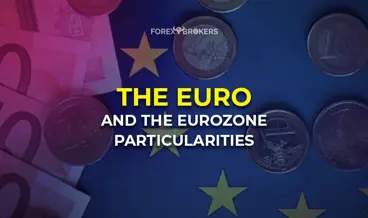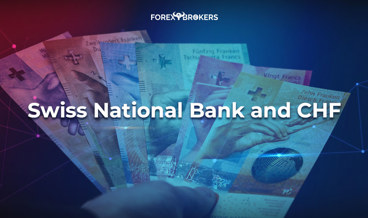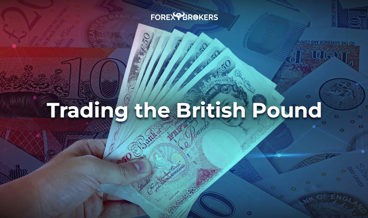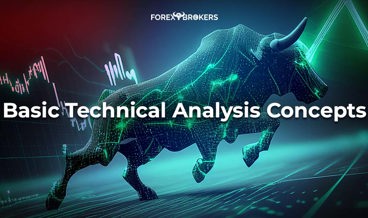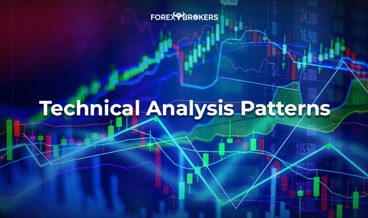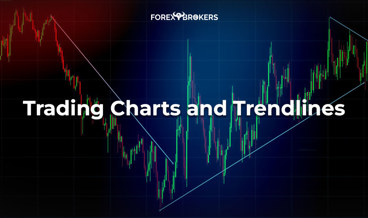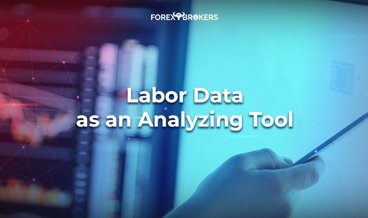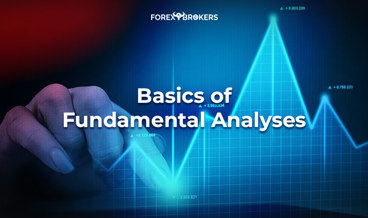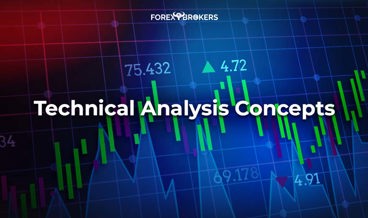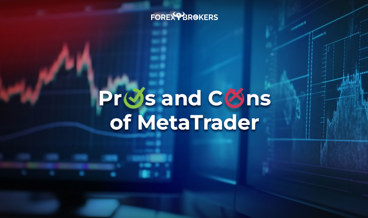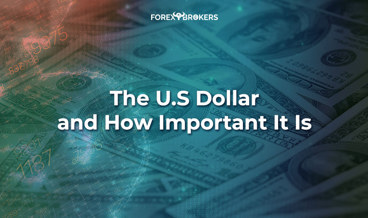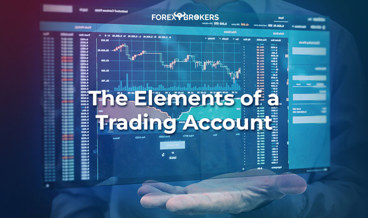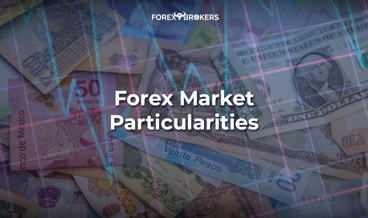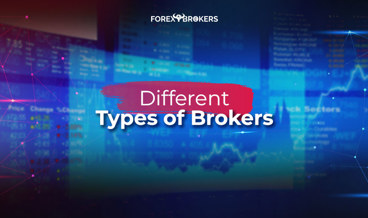We can’t talk about trading financial markets without mentioning speculation. Everyone involved in financial speculation agrees that it is mostly an art rather than a science.
Sure, technical analysis helps. Trend indicators and oscillators offer an educated guess about where the market will go next.
The fundamental analysis offers an explanation of why prices move most of the time. However, successful speculation requires a bit more than that.
In this article, we want to tackle one of the biggest unknowns of trading: What makes a successful trader?
The art of speculation involves many things. First is the objective: to make a profit. Second is an understanding of the traits of a successful trader, the different trading styles, and market psychology. Finally, knowing the other market players helps too, as it gives you an idea of who you are up against as a trader.
Financial markets evolved to the complexity of today’s trading. Not only is there currency trading, but there are also other markets that depend more or less on the same factors.
Equities, bonds, commodities, CFDs (contracts for difference), ETFs (exchange-traded funds), etc. all move in correlated steps. But the market, in general, doesn’t change.
Its complexity remains, even though traders use sophisticated computers and programs. Understanding the market now is no easier than it was a hundred years ago.
So, what makes a successful speculator? Personal intuition combined with the ability to sense patterns of behavior.
On top of that, technical and fundamental analysis is also necessary. It’s everything mentioned so far combined.
And yet, there is always something unknown, undiscerned, about financial markets. That’s what makes trading interesting, besides actually making a profit from trading.

The Name of the Game – Make a Profit
Let’s face it, no one trades for fun or as a hobby.
Even if you hear such a thing, it’s not true. Money is the way we keep score, and making a profit is the name of the game.
In currency trading, being right means money. However, the profit depends on many aspects.
Let’s start with the number of trades. Mastering the art of speculation means consistently making a profit. Not once, not twice, not three times a month, but consistently.
Loses do occur. They are part of the trading game.
Only after embracing them is a trader ready to do this for a living. In the end, what matters is that there are more winners than losers. So, it’s not important if you lose some of the time – what’s important is winning most of the time.
Moving forward, understanding the market is key to mastering speculation. Its particularities, when to sit on your hands and do nothing, when it is likely to move, the most liquid and illiquid times – all these determine your success in trading.
Trading has costs too. To make a profit when trading, one needs to buy something that will increase in value or sell something that will decrease.
If the market rises or falls, it results in a profit. But that’s the profit ahead of costs.
Costs are relevant because they exist in every trade. Commissions, fees, spreads, swaps, local taxes, etc. – they all affect the bottom line.
So, success in financial speculation refers to how much profit you make in the end. First, there’s the profit from transactions (trading).
Then, there’s the profit after deducting all other costs. Finally, there’s the profit that remains after paying taxes.
Statistics Don’t Help – How to Beat the Odds
If what remains is positive and enough to live from, you can trade for a living. That’s the very definition of successful financial speculation: to make enough to live from trading.
Now that we know what financial speculation is, the next question is how to reach that objective, or how to beat the odds that tell us most retail traders fail.
Statistics truly won’t help, since 89% of retail traders fail.

There are many factors that contribute to these terrible numbers. But that’s the reality, and it deserves to be known.
Perhaps these odds are the reason why retail traders keep coming to financial markets. Financial independence, being your own boss, setting your own schedule, working on your own terms – these are only some of the reasons why retail traders try.
And some traders do make it. The world is full of examples of traders that started from scratch and made it big.
If someone has done it, it means it’s possible!
Here are some things to consider:
- don’t treat trading as a hobby
- make time to trade
- don’t invest money you can’t afford to lose
- accept losses as part of the trading game
- use proper risk–reward ratios
- always pay attention to all the elements of a trade
- diversify
- avoid correlations
In this trading academy, we’ll cover all these aspects and more.
We’ll go deep into money management and market psychology. We’ll strive to explain in detail complex trading concepts as well as simple ones. In the end, each strategy has a different meaning for each trader.
The Traits of a Successful Trader
Are you trading material? This is an important question to reflect on before getting too involved with the markets.
Trading is not gambling, but the traits of a successful trader resemble those of a gambler.
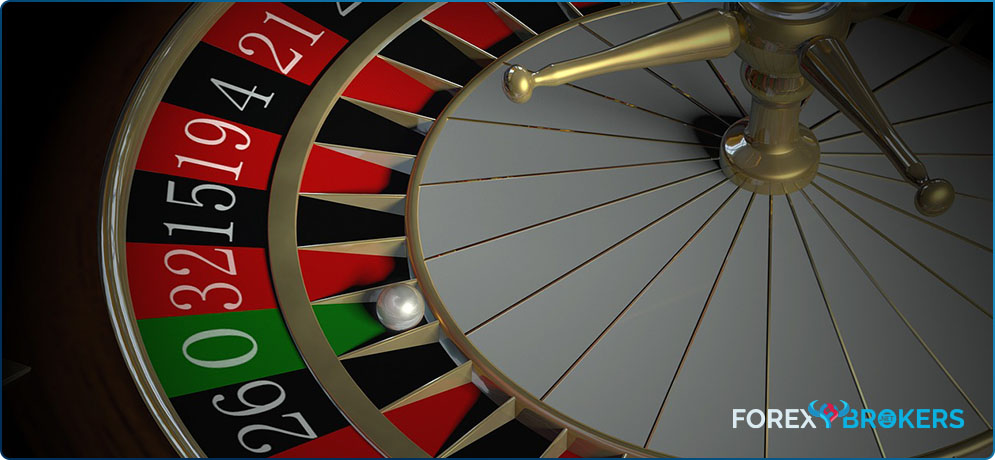
Because there is a thin line between gambling and trading, the definition of a trader resembles that of a gambler with one crucial difference: the trader takes calculated risks.
Hope has no place in the successful trader’s tools to beat the market. However, careful planning, sound money management, risk–reward ratios, and technical and fundamental analysis are all traits of a successful trader.
It all starts with knowing yourself, first as a person and second as a trader.
It may sound strange to say that you must know yourself before starting to trade. But the biggest enemies of sound trading results and successful trading are traders themselves.
The ego, human nature, impulsiveness, reckless behavior, and everything that makes us human all work against successful trading. That’s why algorithmic trading succeeded to some extent in recent years. But more about that and high-frequency trading in the next article of this trading academy.
Patience

Perhaps one of the most important traits of a successful trader is patience. Have a plan and execute it!
The problem comes from human nature. Imagine the following scenario: You go long on EURUSD (meaning you buy the EURUSD pair on the expectation that the price will rise and you’ll make a profit).
The price, as expected, moves to the upside. However, it takes a few days to reach the take-profit level. All this time, the position has shown a profit, without the target being reached.
Few retail traders resist the urge to close the position. They start thinking of a million reasons why they should take what the market is giving them, forgetting about the initial trading plan.
If there’s a reason why the take-profit was set at a specific level, then just be patient and let the market do its thing. The problem is that by closing their positions earlier (i.e., not respecting the entry and exit levels), traders alter their money management plan.
Next, if you’re not patient, your risk–reward ratios won’t make sense anymore. Finally, the account will suffer.
Studies reveal that, as human beings, we’re inclined to react to losses differently than to potential gains. The tendency is to let losses run longer than wins.
But if you use proper risk–reward ratios of 1:2 or 1:3 (meaning the potential profit exceeds the risk by two or three times), the time it takes for the price to reach the profit target generally exceeds the time it takes to reach the stop-loss limit. Hence, patience and discipline are critical in successful financial speculation.
More Patience
Never underestimate the power of doing nothing. That’s especially true in trading.
People come to the currency market with the impression they must buy or sell something simply because the market is open. That’s a classic mistake.
In fact, most of the time, the market sits in ranges. Obviously, the ranges differ from currency pair to currency pair.
Studies have shown that the currency market spends over 65% of the time in consolidation. Therefore, having the patience for the market to move and for the plan to come to fruition is a key element of successful speculation.
Speculating on the Currency Market
Speculation is an art. Rule-based trading systems do the work and reward traders in many ways.
But sometimes, what makes the difference between a good trader and a great trader is instinct. Sometimes, you just feel it is time to exit or enter the market, for no particular reason.
However, that instinct comes with experience and after many screen hours. If they simply observe the market long enough, traders start “feeling” it, knowing the right move, when the market is most likely to give false breaks, and so on.
When trading Forex, and any other market, for that matter, it helps to know its characteristics, including its limitations, opportunities, general strengths and weaknesses, and more.
At the end of the day, it is just like a relationship. The more time you spend with the other person, the more you learn about them.
It’s the same with trading. The more time you dedicate to trading, the more likely you are to master the art of speculation.

Forex Particularities
This trading academy will have an entire article dedicated to Forex particularities. This is necessary because it is one of the most active and sophisticated markets in the world.
For now, we should mention a few things just to highlight the foreign exchange market and its potential:
- This is the largest market in the world, with over five trillion dollars traded every single day.
- It’s open Monday to Friday (24/5) and moves around the clock with no breaks whatsoever.
- Many times, it gaps at Monday’s opening.
- The Forex dashboard comprises currency pairs grouped in different categories.
- The U.S. dollar (USD) is the world’s reserve currency (more on that later in the trading academy), which, as such, represents the Forex dashboard’s pillar.
- Based on the presence of USD in a currency pair, two categories emerge:
- major pairs (have USD in their componence)
- cross pairs (don’t have USD in their componence)
- Traders can both buy and sell currency pairs.
- Buying means going “long,” or expressing a bullish view.
- Selling means going “short,” or expressing a bearish view.
- The difference between the entry and exit price of a trade is the profit or loss.
- The profit or loss is measured in pips.
- Typically, a pip is the fourth decimal place in a currency pair’s quotation (e.g., if EUR-USD has a quote of 1.12789, the change in the fourth decimal place [here, 8] represents the number of pips)
When to Act and When to Sit Calm
We already mentioned the importance of doing nothing. The thing is that by the time you open a trading account, you’ll notice something almost magical happens.
The quotations of currency pairs change so fast that every pip’s movement begins being associated with potential profits. And that’s when the trouble starts.
The problem is that most currency pairs have a five-digit quote. That means that what moves so fast is not actually a pip but a fraction of a pip.
In other words, the moves are insignificant and won’t grant you entry to a trade. So, make sure your entry is based on sound logic, a carefully planned system that leads to the proper outcomes.

Different Trading Styles – Know What Suits You Best
As human beings, we’re all different. Even twins only look alike – they are different people.
Our unique characteristics make us react differently to various inputs. The foreign exchange market, being so large, represents the sum of all traders’ reactions.
What seems bullish to you may seem bearish to some other person.
For every trade opened or closed, there’s someone else on the other end that takes the other side of it. Because of its enormity, the market “swallows” all these orders with ease and doesn’t blink when retail traders execute their orders.
The different personalities result in different trading styles. Your nature dictates your frequency of trading, your outcomes, the time you stay in a trade – basically everything.
Scalping – Basic Concepts
A scalper is a trader that focuses on short and concise market moves. Using mostly the lower timeframes (one minute, five minutes, etc. up to an hour), scalpers execute multiple trades per day.
Their target varies from a few pips to a few dozen pips. However, scalpers make most of their profits by trading large volumes.
The large volume compensates for the lack of market activity. Basically, scalpers don’t need much of a market move to make a profit. Thus, volatility has no role in a scalper’s trading activity.
Most scalpers (short-term traders) are day traders. By not keeping positions open overnight, they avoid paying negative swaps (interest rate differentials) and keep costs under control.
However, the downside to scalping is that when the market moves fast (and it does so often), slippage affects entry and exit levels. Effectively, it means that the broker can’t execute your order at the desired entry or exit place.
Swing Trading – What’s Mandatory to Know
Swing traders have a different – bigger – time horizon from scalpers.
The favorite timeframes for market analysis range from the hourly to the daily chart. Swing traders use trend indicators and oscillators, as well as trading theories, to justify their entries and exits.
Moreover, swing traders keep their positions open overnight. Very often, their trades extend for weeks and even months. As long as the narrative of a trade keeps going, swing traders have no problem riding the trend.
Swing traders always consider all adjacent costs to trading. They look at commissions, spreads, negative swaps, taxes, etc. – at everything that affects the bottom line.
Very important for the swing trader is that fundamental analysis defines turning points, but not as often as for investors.
Investing – Is This You?
To investors, trading has a different meaning. This type of trader goes the extra mile and is willing to pay higher prices for a trade.
Most of the time, an investor is alone in making a trading decision. Because investors use macro-analysis to find turning points in the overall picture, they often open trades well ahead of the curve.
However, that’s a calculated step. To overcome the potential problems related to their early positioning, investors have larger accounts than swing traders or scalpers.
Typically, institutional players and investors rarely base their trading decisions on technical analysis. Instead, they use fundamental analysis to calculate the impact of geopolitical decisions on major economies and act by taking a position on the market.
The volume used is by far the largest of all types of traders. When investors are right, they make a killing, using various methods to analyze the market and filter the information available.
Understanding Market Psychology
Market psychology is one of the areas responsible for a trader’s success or failure. As a trader, you can learn all the technical and fundamental aspects of trading.
However, all the indicators and trading theories in the world won’t help you find the perfect trading setup. Traders that trade for a living (successful financial speculation) have their own opinion about market psychology as well as crowd psychology.
The aggressive advertising of brokerage houses might make one think retail traders are the only traders in the market. However, online trading has been expanding exponentially lately.
When the Internet and personal computers became part of our everyday lives, online trading became a growing opportunity, both for brokers (the potential to earn commissions and fees) and traders (the potential to take part in the largest market in the world).
Earlier in this article, we mentioned that this market volume exceeds five trillion dollars every single trading day. That’s the average.
But out of this vast amount, only part of it belongs to retail traders. In fact, only around 6 or 7% of all trading volume belongs to “regular Joes”.
Truth be told, the chunk grows every year, but it still represents only a fraction of what this market really is.
Hence, understanding market psychology when trading Forex doesn’t mean understanding what other retail traders do. To master speculation in Forex, one needs to know one’s enemies beyond the classic retail trader who has nothing to do with the overall market moves.
Experiment and watch the price action on a day when banks around the world aren’t open for business (e.g., a holiday).
You’ll see that the currency market moves in a tight range, highlighting the trades of the only traders active: retail traders.
Know Your Enemy
More precisely, you need to know your real enemy. The person that takes the other side of your trade is rarely a fellow retail trader.
Instead, it’s usually a significant market player. Such players as central banks, commercial banks, institutional investors, hedge funds, etc. operate a grander scheme than retail traders.
Take central banks, for instance. They set the monetary policy for a country or region.
When banks launch various programs (e.g., QE (quantitative easing) – the process of central banks buying their own government debt), someone needs to execute the programs. Hence, all central banks have a trading department.
As a retail trader, even if you trade millions from your own, private trading account, that’s peanuts in the vastity of these markets.
Your enemies (i.e., other traders that move the prices) trade in orders of hundreds of millions and even billions. So, what chances do retail traders stand in the face of such market players? For one, they need to understand who these players are and what they do and then try to align their interests in the same direction.
Otherwise, retail traders will end up fighting an enemy with more influence, power, available research, and time to sit and wait until the market turns. Retail traders are rarely right on their own.
Even stories of George Soros beating the Bank of England and making billions do not refer to Soros as a retail trader. He had a fund and hence qualified as an institutional player.
Hence, the key to successful financial speculation is to understand who the other market players are and what they do.
- Central Banks
Central banks run the show. Because the interest rate of a currency dictates its strength, changes in the interest rate policy create large fluctuations on the currency market.
Fluctuations mean opportunities for financial speculation. For this reason, traders try to form an educated guess about what the central banks will do with the monetary policy.
For this, traders use the economic calendar. Armed with the economic releases, traders interpret the strengths and weaknesses of an economy and try to guess the next steps of the central banks.
As mentioned earlier, central banks do have trading departments. They buy and sell financial products, creating volatility on the market.
Some central banks, even big ones, directly intervene in the currency market. For instance, the SNB (Swiss National Bank) is known for intervening with CHF, as it is viewed as too strong.
In this trading academy, we’ll discuss central banks and their monetary policy a lot. For currency traders (and others), if you don’t understand the central banks’ actions, there’s no way to master the art of speculation.
- Institutional Players
Typically hedge funds or funds of funds, institutional players use various techniques to trade on the market. Some are open funds, some closed funds, and some quant funds.
Regardless of their type, they are all in the market to make a profit and have bigger resources, tools, and funds at their disposal than all retail traders combined.
- Commercial Banks
Commercial banks have a treasury department that buys and sells currencies as instructed by the bank’s customers.
Consortiums of commercial banks participate in large mergers and acquisitions. That means that they are instructed to buy or sell certain currencies depending on the terms of the deal.
Commercial banks mostly execute their clients’ orders and aren’t in the market to make a profit. However, they are active market participants that do understand the currency market better than most retail traders do.
- Brokers
Believe it or not, brokers do trade too. Depending on the type of brokerage house, brokers participate directly or indirectly in the market.
In the part of the trading academy dedicated to newcomers, we’ll cover most types of brokers, highlighting the advantages and disadvantages of each type. As you’re about to find out, some brokers are market makers, some are hybrids, and most of them take positions on the market to speculate on its moves and from their clients' exposure.
- Retail Traders
Coming back to retail traders, they’re often used to interpret the right market direction. Reports like COT (Commitment of Traders) show the exposure of the retail trading segment.
Extreme exposure on the long or short side of a currency pair indicates the retail sector is most likely in the wrong position. Remember the statistics we mentioned earlier?
All the other market players use these probabilities in their favor by opening positions against the direction of the retail traders. Market psychology tells us that crowds are always wrong, so aligning your interest with the crowd won’t help.
The “crowd” in currency trading is the retail traders, a large number of market participants moving the smallest volume possible.
Know Your Enemy’s Strengths and Weaknesses
By now, the complexities of mastering the art of speculation are apparent. With so many interests aligned for the same purpose, it is difficult to trade for a living.
But it’s not impossible. The thing is just that the retail trader isn’t prepared for what currency trading means.
Like all battles, it all starts with knowing your enemy’s strengths and weaknesses.
- How to Watch the Actions of the Central Banks
Central banks have a predetermined schedule. Every year, they meet several times to analyze the economy.
Several ways exist to monitor the actions of the central banks. First, note the dates of the central banks' meetings and monetary statement releases.
Second, monitor the press conferences and keep an eye on the market. You’ll find there’s a strong correlation between a price action and the action of the central banks.
Third, know the implications of the central banks’ decisions and never underestimate their ability to influence prices.
- Understanding the Actions of the Central Banks
The primary purpose of a central bank is price stability. That defines its mandate.
Price stability always refers to inflation. As inflation rises or falls, the central bank reacts by raising or cutting the interest rate level.
Typically, the standard interest rate hike or cut is a quarter of a basis point, or 0.25%.
However, desperate times call for desperate measures. Throughout the history of central banks, they have needed to hike or cut aggressively, more than the market expected, many times.
The classic interpretation says the following:
- Higher inflation leads to high interest rates, making a currency more attractive.
- Low inflation leads to easing the monetary policy and low interest rates, making the currency cheaper, and traders sell it.
Everything central banks do relates to monetary policy. Every speech, action, and TV interview has the purpose of easing or tightening the monetary policy.
For instance, the market might not understand the message properly from the statement release and the press conference. In such a case, central bank members hold speeches and interviews and guide the market to understanding the right message. That eases or tightens the monetary policy between two or more central bank meetings.
- Price Action – the Key to Successful Speculation
Price action refers to all the market moves. Many traders use the so-called “pure price action” to speculate on financial markets.
Some traders refer to it as market geometry. They argue that the market has its inflection points and reacts religiously when it meets them.
Some others say that support and resistance levels define price action and that they represent all you need to know for successful speculation.
The truth is that price action does help. It reveals a lot about the pivotal levels, a psychological one, why support will turn into resistance, and so on.
But price action alone, without fundamental analysis, doesn’t work. For this reason, the combination of technical, analytical, and fundamental skills drives successful speculation.
Know Yourself and Master the Trading Game
We must end with the psychology of trading. Speculation, as we have argued, is the art of buying low and selling high.
How hard can it be? The truth is that it is not that hard if only done from time to time.
But when you trade for a living, day in and day out, you must be right as a trader. Sometimes you simply have no patience to wait. Sometimes something else is more important.
Other times, the market moves so strangely it seems like it’s moving only to trip your stop-losses. But the truth is that the mind plays tricks on traders.
Because the market is the place that reflects human behavior the best, the chances are that a trade will move against you from the moment you take it. And that is correct most of the time.
The challenge, of course, comes from knowing that and still being able to beat the market at its own game. Many traders avoid distractions, locking themselves in their trading room and not allowing anything to intervene.
But the truth is that trading is a lonely game. In the end, you and your thoughts, strengths, and weaknesses are what that determine the results.
Are you up to it? If so, prepare for the journey of a lifetime, because trading rewards the brave ones. But don’t expect it to be an easy journey, as the subject is vast enough to cover years of a trader’s life.
It is said that traders always learn because the market continuously changes. Indeed, that’s the case!

Conclusion
If you step back a bit and review this article, one thing stands out. There are two major components, both of them necessary to master the art of speculation.
One is you, the trader. Knowing yourself, your strengths and weaknesses, and what you can bring to the trading table helps most traders find success in financial speculation.
The other relates to the rest of the market participants, especially the actions and mandates of the central banks and how the value of currencies shift based on their actions.
These two aspects combined are enough to master the art of speculation on the currency market. Everything else is secondary.
Money management plays a vital role, too. Any strategy, if not following a strict money management system, will fail eventually.
Therefore, knowing yourself and understanding the central banks’ role in the currency market is one thing, and executing a trading plan and staying disciplined is another.
Our next article in this trading academy covers trading in the 21st century. We’ll focus on expert advisors, robots, automated trading, and the pros and cons of each trading system, paving the road for the trading strategies and techniques introduced later.


